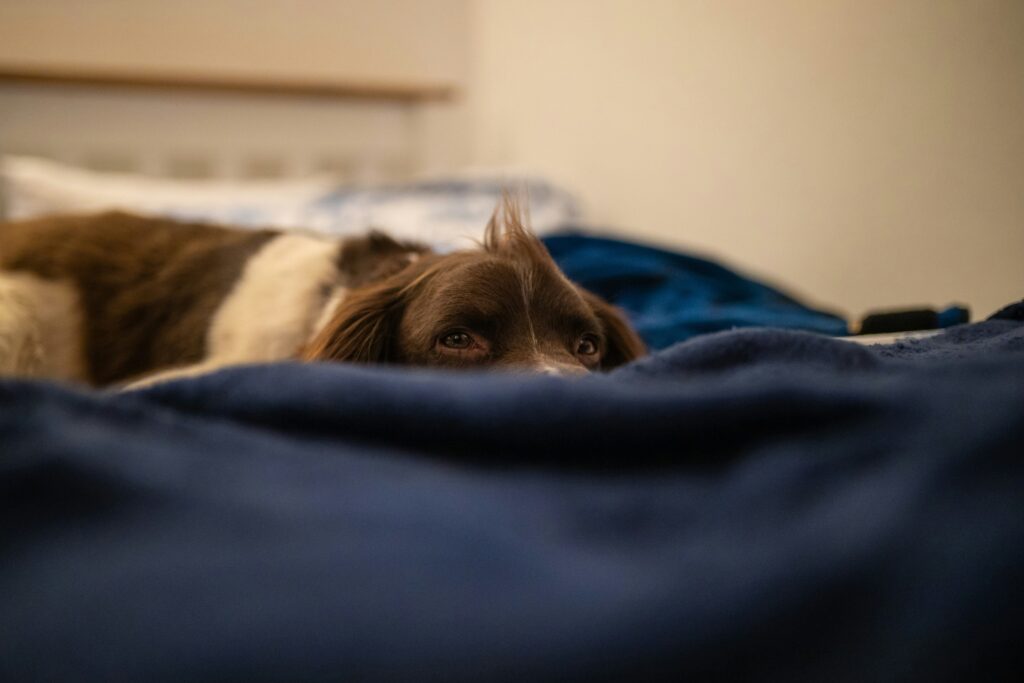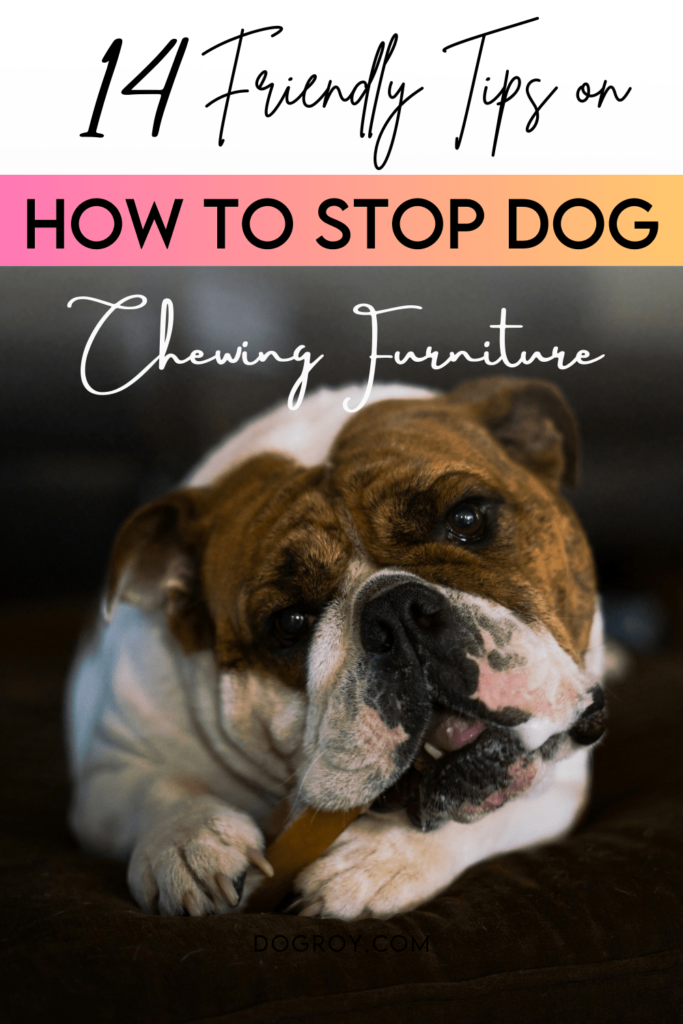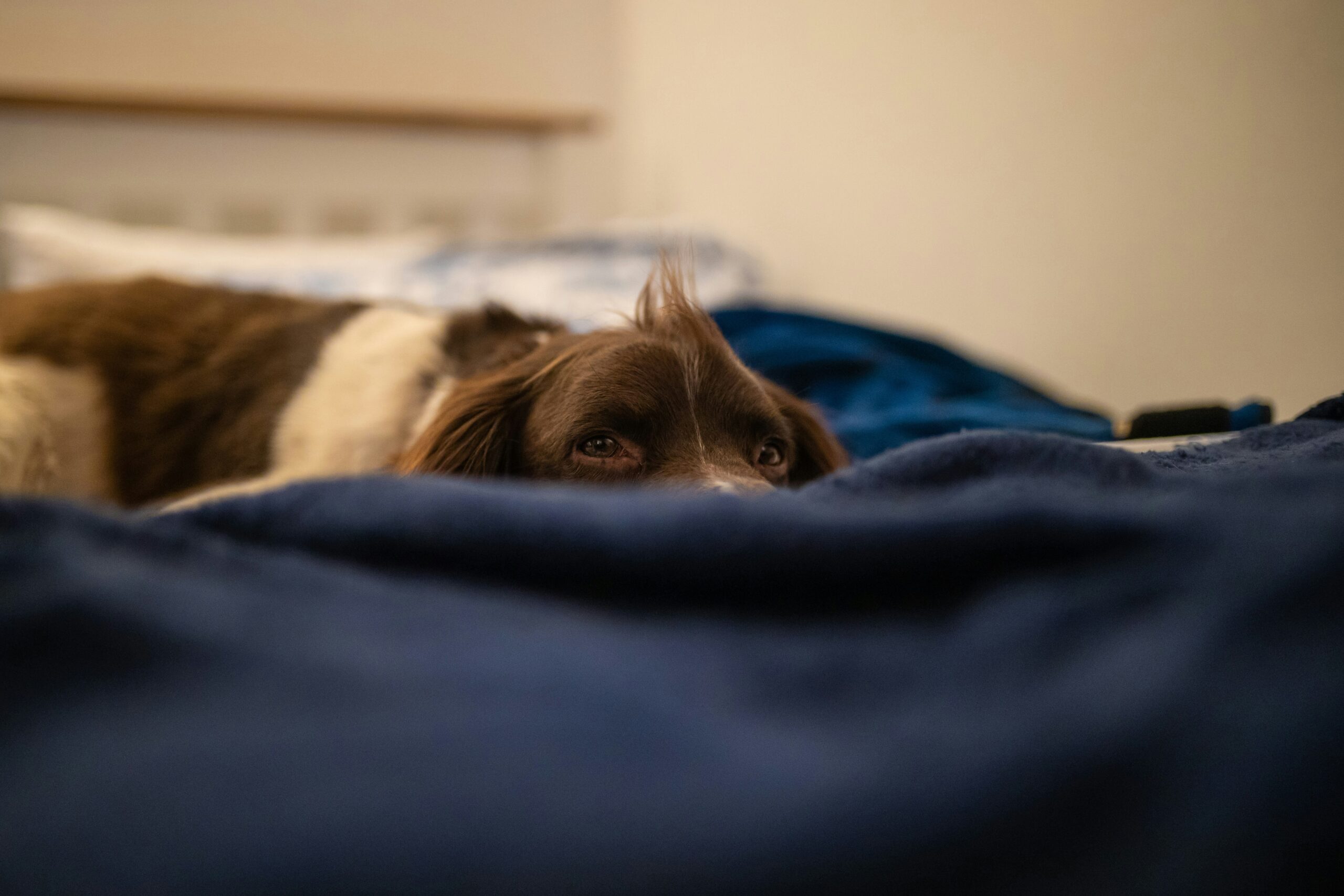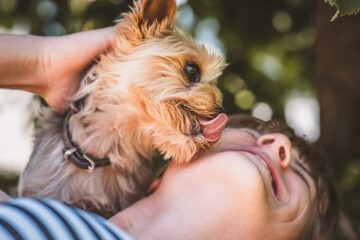Living with a lovable canine companion brings immense joy, but the challenge of managing furniture-chewing habits can sometimes cast a shadow on the overall experience.
If you find yourself wondering, How to Stop Dog Chewing Furniture, rest assured, you’re not navigating this common canine behavior alone.
Understanding the root causes behind your dog’s inclination to chew furniture is pivotal for finding a lasting solution.
Whether it stems from teething, boredom, anxiety, or simple curiosity, addressing these underlying factors is the key to implementing a remedy that stands the test of time.
Throughout this guide, we aim to provide you with the knowledge and tools necessary to redirect your dog’s chewing instincts, nurturing a healthy and mutually beneficial relationship between pet and owner.
Table of Contents
A Pawsitive Approach: 14 Tips on How to Stop Dog Chewing Furniture

1] Provide Appropriate Chew Toys
Ensuring your dog has a variety of chew toys is fundamental for redirecting their natural chewing instincts.
Dogs have an innate need to chew, whether to alleviate teething discomfort, reduce stress, or simply for enjoyment.
Opt for toys with different textures and shapes to keep them engaged and satisfied.
Durable rubber toys, nylon bones, and soft plush toys can offer diverse tactile experiences. Regularly assess the condition of these toys to ensure they remain safe and appealing for your dog.
2] Use Bitter Sprays or Deterrents
To protect your furniture, consider using bitter-tasting sprays or pet-friendly deterrents.
Apply these substances to the surfaces your dog tends to chew. The unpleasant taste discourages them from continuing this behavior.
It’s crucial to choose products that are safe for pets and won’t harm your furniture.
Consistency in application is key, as it helps create a lasting association between the furniture and the undesirable taste.
Tip: “Discourage chewing by making the furniture taste less appealing to your dog.”
3] Supervise and Redirect
Active supervision is essential in curbing destructive chewing.
Whenever you catch your dog in the act of chewing furniture, promptly redirect their attention to an appropriate chew toy.
Offering an appealing alternative not only prevents damage to your belongings but also reinforces positive chewing habits.
4] Invest in Interactive Puzzle Toys
Chewing isn’t just a physical activity; it’s also a mental exercise for your dog.
Interactive puzzle toys provide mental stimulation, engaging your dog’s problem-solving skills and focusing their energy on a rewarding activity.
These toys often dispense treats as a reward, adding an extra layer of enjoyment.
Incorporating puzzle toys into your dog’s routine can be particularly beneficial for breeds known for their intelligence and high energy levels.
• Chewing is a mental exercise for your dog, not just physical • Interactive puzzle toys provide mental stimulation • Engage problem-solving skills and focus energy on a rewarding activity
5] Establish a Designated Chewing Area
Designate a specific area within your home as a chew-friendly zone.
Equip this area with an assortment of appropriate chew items.
Encourage your dog to focus their chewing activities in this zone by offering positive reinforcement when they choose to chew on items within the designated area.
This approach not only protects your furniture but also creates a clear distinction for your dog on where chewing is acceptable.
6] Use Chew-Resistant Furniture Covers
Investing in furniture covers designed to resist chewing is a proactive measure to safeguard your belongings.
These covers act as a physical barrier, preventing direct contact between your dog’s teeth and the furniture.
Choose covers made from durable and chew-resistant materials.
While this solution may not address the root cause of the chewing behavior, it provides a protective layer until training efforts take full effect.
Tip: “These covers create a physical barrier, safeguarding your furniture from curious teeth.”
7] Apply Pet-Friendly Anti-Chew Creams
Explore the use of anti-chew creams with pet-friendly scents.
Apply these creams to furniture surfaces to create an aromatic deterrent.
Dogs have a keen sense of smell, and the introduction of unfamiliar scents can dissuade them from chewing.
Ensure the chosen product is safe for pets and doesn’t cause any discomfort.
8] Regular Exercise
Dogs often resort to destructive behaviors, including chewing, when they have excess energy.
Regular exercise is a key component of managing this energy and preventing unwanted chewing.
Engage your dog in daily activities such as walks, play sessions, or interactive games.
Tailor the intensity and duration of exercise to your dog’s breed, age, and health.
A tired dog is less likely to engage in destructive behaviors, promoting a harmonious living environment.
Tip: “A tired pup is less likely to turn to furniture for entertainment.”
9] Consult a Veterinarian
If your dog’s chewing behavior persists despite training efforts, it’s crucial to consult a veterinarian.
Underlying medical issues, such as dental problems or gastrointestinal discomfort, could contribute to the behavior.
A thorough examination by a veterinarian can rule out potential health concerns and guide appropriate interventions.
Addressing any medical issues ensures a holistic approach to managing chewing behavior.
10] Reward Good Behavior
Positive reinforcement is a powerful tool in shaping your dog’s behavior.
Praise and reward your dog when they exhibit good chewing behavior by using appropriate toys.
Whenever your dog chooses a chew toy over furniture, offer verbal praise, affection, or small treats.
Positive reinforcement strengthens the connection between the desired behavior and the associated rewards, motivating your dog to continue making the right choices.
• Positive reinforcement shapes your dog's behavior effectively • Praise and reward good chewing behavior with appropriate toys • Offer verbal praise, affection, or treats when they choose a chew toy over furniture
11] Rotate Chew Toys
Dogs can easily get bored with their toys if they remain the same for an extended period.
To keep your dog’s interest alive, regularly rotate their chew toys. Introduce new toys or bring back ones that were temporarily removed.
A variety of textures, shapes, and flavors prevents boredom and ensures that your dog always has an appealing option for their chewing needs.
This simple strategy can contribute to a more satisfying and diverse chewing experience.
12] Training Commands
Incorporate basic training commands like “leave it” to deter chewing on inappropriate items.
Consistent training empowers your dog to understand which items are off-limits.
Practice the “leave it” command during dedicated training sessions, gradually introducing it in real-life situations.
When your dog shows interest in furniture or other forbidden objects, issuing the command and redirecting their attention reinforces the concept of respecting boundaries.
In the language of commands, your dog learns the art of respectful boundaries.
13] Use Pet-Friendly Repellent Mats
Aversion training with pet-friendly repellent mats can be an effective strategy.
These mats emit harmless static pulses when touched, creating an association between the undesirable behavior (chewing furniture) and a mild, harmless correction.
Place these mats on surfaces where your dog tends to chew.
Over time, your dog learns to associate the unpleasant sensation with the act of chewing on inappropriate items, promoting a natural aversion.
14] Consult a Professional Trainer
Persistent furniture chewing may require the expertise of a professional dog trainer.
A trainer can assess your dog’s specific behavior, identify underlying reasons for the chewing, and provide personalized guidance.
Professional trainers utilize a variety of techniques to address behavioral challenges effectively.
Tip: “They can provide personalized guidance and strategies to address specific chewing challenges.”
How to Stop Dog Chewing Furniture: FAQs
Is chewing furniture normal behavior for dogs?
Chewing is a natural behavior for dogs, but when directed towards furniture, it can become problematic. Providing appropriate outlets and guidance can help curb this behavior.
Can certain breeds be more prone to furniture chewing?
While all dogs have a natural inclination to chew, some breeds may be more prone to excessive chewing. Consistent training is essential for every breed.
How long does it take to stop dog chewing furniture?
Training timelines vary, but with consistent efforts, positive changes can often be observed within a few weeks. Patience and persistence are key.
Can older dogs develop furniture-chewing habits?
Yes, older dogs can develop chewing habits, especially if they are anxious or bored. Addressing the underlying cause and implementing training can help break the habit.

Conclusion:
Putting an end to the habit of dog chewing on furniture is a journey that requires patience and consistency.
With these 14 friendly tips on How to Stop Dog Chewing Furniture, you can reclaim your living space and foster a healthier environment for both you and your furry companion.
Remember, a combination of positive reinforcement, appropriate chew toys, and a little training can go a long way in breaking the chewing habit.
Embrace the process, celebrate small victories, and enjoy a harmonious living space with your well-behaved and furniture-friendly pup.





